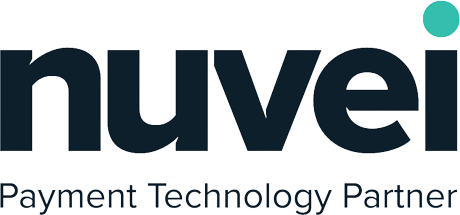Kubernetes Security
Standardise your Kubernetes before it becomes your company backdoor

Go Beyond Legacy Solutions
We at GlobalDots hunt for the most cutting edge and relevant technologies out there.
Once tested and found qualified we bring you the most certified innovative products out there for every pressing use case.

Your Benefits
Intimately familiar with Kubernetes and Istio security best practices, we can help build compliance checks such as Kubernetes vulnerability scanning, hunting misplaced secrets or excessive secret access.

We’ll help integrate security into the deployment phase of your CI/CD pipeline. Profile-driven algorithms will detect unwanted configuration drifts between versions. Link alerting to Slack, email, our 24/7/365 NOC, or your preferred SIEM system.

 Policy Enforcement
Policy Enforcement
Create policies to control workload hardening from Pod Security to network policies, Ingress controllers, Kubernetes API server access privileges and Kubernetes operators. Leverage our DevOps as a Service for fine-tuning your configurations.

Continuously scans the Kubernetes cluster configuration file for security misconfigurations. K8s audit logs are scanned with ML & AI to spot anomalies early and give your team the real story.

-
Can I switch between vendors if I’m not satisfied with one of them?
Yes, one of the main advantages of working with GlobalDots is that we have relationships with multiple vendors per solution category, so our customers can switch between vendors if they would like to. Moreover, we will proactively offer better vendors if we see the value for the customers in terms of features, capabilities or price.
-
How does GlobalDots keep up with the latest technologies in the market?
The people working at GlobalDots live and breath technology. We have relationships with all the cool startups and always seeking new vendors with innovative tech to offer to our customer base. We research and explore emerging technologies on a weekly and daily basis, we filter out the noise and focus only on the promising solutions we vetted that will bring the most value to our customers.
-
What does support look like when working with GlobalDots?
Our solutions architects, engineers and DevOps experts have hands-on experience with the solutions we resell and integrate. Our engineers work with you to resolve any issue to your satisfaction, and never leave you hanging. If needed, we’ll be the ones to engage directly with the vendor, so you don’t have to.
-
What are the 4 C's of Kubernetes security?
The 4 C’s of Kubernetes security are Code, Container, Cluster, and Cloud. Each layer builds upon the next, forming a security model that ensures the entire Kubernetes environment is protected. Here’s a brief overview:
- Code: Secure coding practices ensure that applications are free from vulnerabilities. It involves writing safe and secure code and conducting regular code reviews.
- Container: Container security focuses on the image’s integrity and the container runtime. Scanning container images for vulnerabilities before deployment is crucial.
- Cluster: This layer involves securing Kubernetes components like the API server, etcd, and node configuration. Network policies and access controls help protect the cluster.
- Cloud: This involves securing the underlying infrastructure, whether it’s on-premises or cloud-based. Implementing strong IAM policies and monitoring cloud activity are essential.
-
What is pod security in Kubernetes?
Pod security in Kubernetes refers to the mechanisms and practices that control and enforce the security of pod execution environments. With the deprecation of PodSecurityPolicy in Kubernetes v1.21 and its removal in v1.25, Kubernetes now recommends using Pod Security Admission for managing pod security.
Pod Security Admission is a built-in admission controller that enforces security standards at the pod level based on predefined security profiles. These profiles determine what security-sensitive features are allowed, such as running as a non-root user, restricting privileged containers, and limiting host filesystem access.
To implement pod security, administrators can define and enforce three main security levels through Pod Security Admission:
- Privileged: No restrictions; allows all features and configurations.
- Baseline: Permits reasonable defaults, but restricts overly permissive configurations.
- Restricted: Applies the most stringent security settings for high-security environments.
-
How does Kubernetes authentication work?
Kubernetes authentication involves verifying the identity of users or service accounts accessing the API server. Kubernetes supports several authentication methods:
- Client certificates: X.509 client certificates can authenticate user requests.
- Bearer tokens: Tokens issued by an external identity provider, often used for service accounts.
- OpenID Connect: Integrates with identity providers supporting OpenID.
- Basic authentication: Using static username and password pairs, though not recommended for production environments.
Once authenticated, Kubernetes uses Role-Based Access Control (RBAC) to manage permissions.
-
How do you maintain security in Kubernetes?
- Use Role-Based Access Control (RBAC) to restrict access to resources.
- Use Network Policies to control traffic between pods.
- Use Pod Admission Controllers to enforce security policies.
- Regular Updates: Keep Kubernetes and its components up to date to mitigate known vulnerabilities.
- Audit Logs: Enable auditing to track access and changes within the cluster.
- Image Scanning: Regularly scan container images for vulnerabilities before deployment.
- Restrict a Container’s Access to Resources with AppArmor or SELinux.
- Restrict a Container’s Syscalls with seccomp profiles.
-
How do you ensure security in Kubernetes?
Ensuring security in Kubernetes involves a multi-layered approach:
- Secure Configuration: Properly configure Kubernetes components to prevent unauthorized access.
- Monitoring and Auditing: Continuously monitor the cluster for suspicious activities and maintain audit logs for compliance. Also do not forget to set up alerts and notifications for security incidents.
- Least Privilege Principle: Assign only the necessary permissions to users and applications.
- Regular Patching: Apply security patches and updates promptly.
-
How do I restrict access in Kubernetes?
Restrict access in Kubernetes by:
- Grant Least Privilege: Use Role-Based Access Control (RBAC) to grant the minimum permissions necessary for users and services.
- Use Namespaces: Use namespaces to isolate resources and restrict access to specific users or teams.
- Create Service Accounts: Use service accounts to authenticate pods and grant them specific permissions.
- Update Policies: Regularly review and update RBAC policies to ensure they align with your security requirements.
- Network Policies: Use Network Policies to control traffic between pods and enforce security rules.
-
Is Kubernetes traffic encrypted?
Yes, Kubernetes encrypts traffic in several ways:
- API Server Communication: Traffic between clients and the API server is encrypted using HTTPS/TLS.
- Node-to-Node Communication: Encryption can be configured for communication between nodes.
- Pod-to-Pod Communication: While not encrypted by default, tools like Istio or Linkerd can provide mutual TLS (mTLS) for pod-to-pod encryption.
-
How to secure secrets in Kubernetes?
Securing secrets in Kubernetes involves:
- Encryption at Rest: Enable encryption of secrets stored in etcd.
- Access Control: Use RBAC to control who can read, create, or modify secrets.
- Environment Isolation: Avoid storing secrets in environment variables if possible, and use mounted volumes instead.
- Rotate Secrets: Regularly rotate and update secrets to minimize exposure.
- Create Service Accounts: Use service accounts to authenticate pods and grant them access to secrets.
- Use Secret Management Tools: Consider using external secret management tools like HashiCorp Vault or Kubernetes Secrets Store CSI Driver for enhanced security.
- Protect Secret data after reading: Ensure that secrets are not exposed in logs or other monitoring tools after being read by applications.
-
What is security in Kubernetes?
Security in Kubernetes refers to the measures and best practices used to protect a Kubernetes cluster, its workloads, and the data it processes. This includes securing the control plane, nodes, and applications running on the cluster.
Following the 4 C’s of Kubernetes security (Cluster, Configuration, Code, and Container) is essential to ensure a secure Kubernetes environment.
- Container security.
- Using a minimal base image for a container
- Specifying a user instead of a root
- Use a specific tag for a base
- Limiting the resources a container can use
- Cluster security
- Enabling Role-Based Access Control (RBAC)
- Using Network Policies
- Enabling Pod Security Policies (Admission Controller)
- Using Service Mesh for secure communication
- Code security
- Using secure coding practices
- Regularly scanning container images for vulnerabilities
- Implementing secure CI/CD pipelines
- Cloud security
- Securing the cloud infrastructure where Kubernetes is deployed
- Using secure cloud services
- Implementing secure network configurations
- Monitoring and logging cloud activities
- Auditing cloud resources
- Container security.
-
How do I create a SSL secret in Kubernetes?
To create an SSL secret in Kubernetes:
- Generate Certificate: Obtain or generate your SSL certificate and key.
- Create Secret: Use the following command to create a TLS secret:
kubectl create secret tls <secret-name> –cert=<path-to-cert> –key=<path-to-key>
Replace <secret-name>, <path-to-cert>, and <path-to-key> with your specific details.
-
What are the security risks of Kubernetes operators?
Kubernetes operators automate the management of complex applications. However, they pose several security risks:
- Elevated Privileges: Operators may require elevated privileges, increasing the risk of unauthorized access if compromised.
- Code Vulnerabilities: Bugs or vulnerabilities in the operator’s code can lead to security breaches.
- Dependency Risks: Operators rely on third-party dependencies, which may introduce security vulnerabilities.
-
Why is Kubernetes insecure?
Kubernetes is not inherently insecure, but its complexity can introduce security challenges:
- Misconfigurations: Inadequate configuration of RBAC, network policies, or pod security can expose the cluster to threats.
- Rapid Updates: Frequent updates can lead to vulnerabilities if not promptly applied.
- Complexity: The intricate nature of Kubernetes makes it difficult to ensure all components are secure without thorough understanding.
-
What is the security weakness of Kubernetes?
The main security weaknesses of Kubernetes is the complexity of its architecture and the potential for misconfigurations.
Common security weaknesses include:
- Insecure Defaults: Kubernetes may have insecure default configurations that need to be hardened.
- Misconfigurations: Misconfigured RBAC, network policies, or pod security policies can lead to security vulnerabilities.
- Vulnerabilities in Dependencies: Kubernetes relies on various components and dependencies, which may have security vulnerabilities like operators, plugins, or third-party tools.
- Lack of Visibility: Limited visibility into the cluster’s security posture can make it challenging to detect and respond to security incidents.
-
What is the risk of using Kubernetes?
The most common risks of using Kubernetes related to the complexity of the platform and the costs of supporting it.
-
What is the biggest problem with Kubernetes?
The biggest problem with Kubernetes is its operational complexity. Managing a Kubernetes environment demands a solid understanding of its components and their interactions. This complexity can lead to misconfigurations, impacting both security and performance.
-
Why is Kubernetes so difficult?
Kubernetes is difficult due to its modular and extensible architecture. Another reason is the k8s has been designed to orchestrate billions of containers in a large scale environment for production ready systems. So, we should pay for the stability and scalability of the system.
-
Why is Kubernetes killing my pod?
Kubernetes may kill a pod for several reasons:
- Resource Constraints: The pod exceeds its requested CPU or memory limits, leading to eviction.
- Node Failure: The node hosting the pod becomes unavailable.
- Liveness/Readiness Probe Failures: Health checks fail, causing Kubernetes to restart the pod.
- Eviction Policies: Pods may be evicted based on configured eviction policies, such as node pressure.
Investigating logs and events can help diagnose the specific reason for pod termination.















